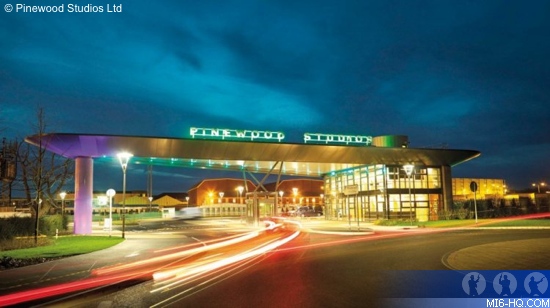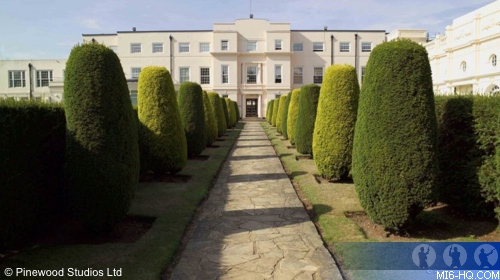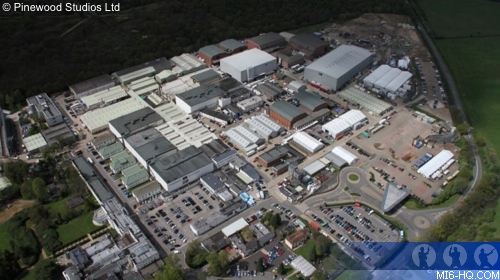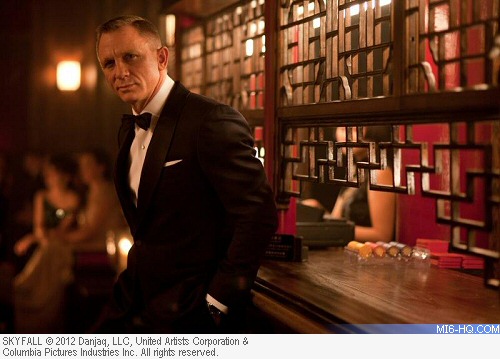Pinewood History
18th May 2014
7 years ago Pinewood's iconic 007 Stage was reopened after a complete rebuild. MI6 looks back on the bond between the studio and the 007 franchise
 By MI6 Staff
By MI6 Staff
When Bond producers needed a UK-based studio to accommodate their original 007 production, "Dr. No", there was, arguably, only one obvious choice: Pinewood. Located in Iver Heath, Buckinghamshire, UK, the studio is 20 miles west of the British capital. "Dr. No" inaugurated a bond between EON Productions and the historic studio that lasted throughout 007's 50-plus years of screen time. But Pinewood itself has an interesting backstory (punctuated, as ever, by 007), worthy of deeper exploration.
The studio was first conceived of in 1935 when Charles Boot purchased the Heatherden Hall Estate and joined forced with pioneering British filmmaker J Arthur Rank. To turn the estate into a fully fledged film studio, the investors spent one million pounds in the construction of the earliest sound stages. Pinewood opened its doors on 30 September 1936; the first production to be completely filmed on its sets and in its grounds was the 1936 picture, "Talk of the Devil". When war broke out in Europe the military occupied Pinewood, producing public information films on its sound stages.
The 1950s was a booming decade for the British film industry and much of the production of the popular Carry On pictures was based at Pinewood. As Pinewood celebrated its 21st birthday, throwing open its doors for a bit of a do, visitors were able to observe the giant sets of Dirk Bogarde's "A Tale of Two Cities", based on the Dickens classic, for which production designers had replicated the Bastille in a green corner of the British countryside.
|
The same year that 007 moved in, Rank himself retired as chairman of the studio and the Rank Organisation began to divest, focusing less on film production and on other areas of entertainment. Bond fans got their first glimpse of Pinewood on screen when the house and gardens were used as SPECTRE island, seen in the pre-titles sequence of "From Russia With Love". The Bond crew repeated the trick again when parts of the "Goldfinger" DB5 chase sequence were set in Pinewood grounds. Although the production did shoot some of the sequence on location, the Pinewood back lot doubled for Goldfinger's Swiss factory, which was a key player in the villain's gold smuggling operations. After the famous scene in Bond's third screen adventure, the studio now boasts a "Goldfinger Avenue".
Although Pinewood pride themselves on developing and growing to meet the needs and technicalities of modern filmmakers, it must be acknowledged that the Bond filmmakers themselves frequently push the mould. From building the gigantic volcano lair out of scaffolding and plaster for "You Only Live Twice", to the construction of Europe's largest studio - the 007 Stage - Bond filmmakers have a key working relationship with Pinewood. The 007 Stage is case in point. Created to house Ken Adam's visionary set for the inside of Karl Stromberg's Liparus supertanker, the 007 Stage was officially opened on December 5th 1976. British Prime Minister Sir Harold Wilson attended the opening of the 100m long stage. It's tank measured 91m x 22.5m x 2.7m deep, enough to house the life-size nuclear submarines the villain was seen to be "capturing". The 007 Stage has since been home to a series of grand Hollywood blockbusters including: "Superman: The Movie", "Clash of the Titans", "Mission: Impossible", "The Fifth Element", "Prince of Persia", and "Prometheus".
|
The grand soundstage was well-used by 007 filmmakers throughout the 1970s, but when a fire broke out before the production team was due to build and stage the violent underground climax of "A View To A Kill", production schedules had to quickly be rewritten. Pinewood and EON had a hard decision to make: would they rebuild the studio and finish in time for Moore's swan song to shoot, or would 007 have to bid farewell to the iconic stage. Between June '84 and January '85 Pinewood reconstructed the 007 Stage, renaming it officially in producer 'Cubby' Broccoli's honour: Albert R. Broccoli 007 Stage.
Pinewood attracted the attention of some of Hollywood's biggest names and, in 1981, the Rank Organisation declined an offer to buy the studios by an A-list syndicate headed by Francis Ford Coppola. It was understood at the time that his backers included Steven Spielberg, Martin Scorsese, Brian De Palma and Michael Powell.
After striking the sinking Venetian house sets, used for "Casino Royale", a second fire broke out in July 2006. The production of Bond 21 was not compromised, but the extent of the fire meant that the stage would have to be demolished and reconstructed from the ground up. The new studio space was even larger than its predecessor, measuring 59,000 square feet, with an immense tank capable of holding 5.25 million litres. Pinewood completed the construction on the new soundstage in just six months.
|
The 007 stage is not the only specialist stage on the Pinewood Buckinghamshire lot. A specially constructed Underwater Stage, the only one of its kind in Europe, was opened for use in 2005. It is a permanent water tank with temperature regulation and high quality filtering.
The studios celebrated their 70th birthday in 2001 in quite an unorthodox fashion. 2001 marked the takeover of one of Pinewood's key rivals in the British film industry: Shepperton Studios. Based in Surrey, England, Shepperton has an equally impressive history, and has been home to some film classics: "The Third Man" (1949), "A Clockwork Orange" (1971), "The Day of the Jackal" (1973), and "Out of Africa" (1985), to name just a few.
For the production of "Skyfall", Sam Mendes, Michael Wilson and Barbara Broccoli used Pinewood facilities extensively, thereby keeping down the costs of shooting on international locations. The lavish Pinewood-based sets blended seamlessly with second unit photography to achieve the desired effect. Thirty-one different sets were constructed on eight sound stages at Pinewood, including the interior of the MI6 underground bunker, the interior of the Golden Dragon Casino, where Bond first meets Severine, and the exterior of the Dead City, an abandoned island off the coast of Macao, where Silva resides. The 007 Stage was home to the spectacular underground train crash that occurs when Bond is chasing Silva. For the crash, the crew built two full size train carriages, each weighing seven tons. It was too dangerous to allow people to stay on the sound stage, so ten remotely operated cameras were placed inside the 007 Stage to cover the crash from various angles.
|
In December 2013 the company opened its latest stage, named Q Stage, after the Quartermaster character of the Bond adventures. The producers of the Bond films Barbara Broccoli and Michael G. Wilson were in attendance, along with Ben Whishaw, the actor who played the famed MI6 Quartermaster in "Skyfall". The stage is 30,000 square feet, with 15,000 square feet of production accommodation and workshops.










